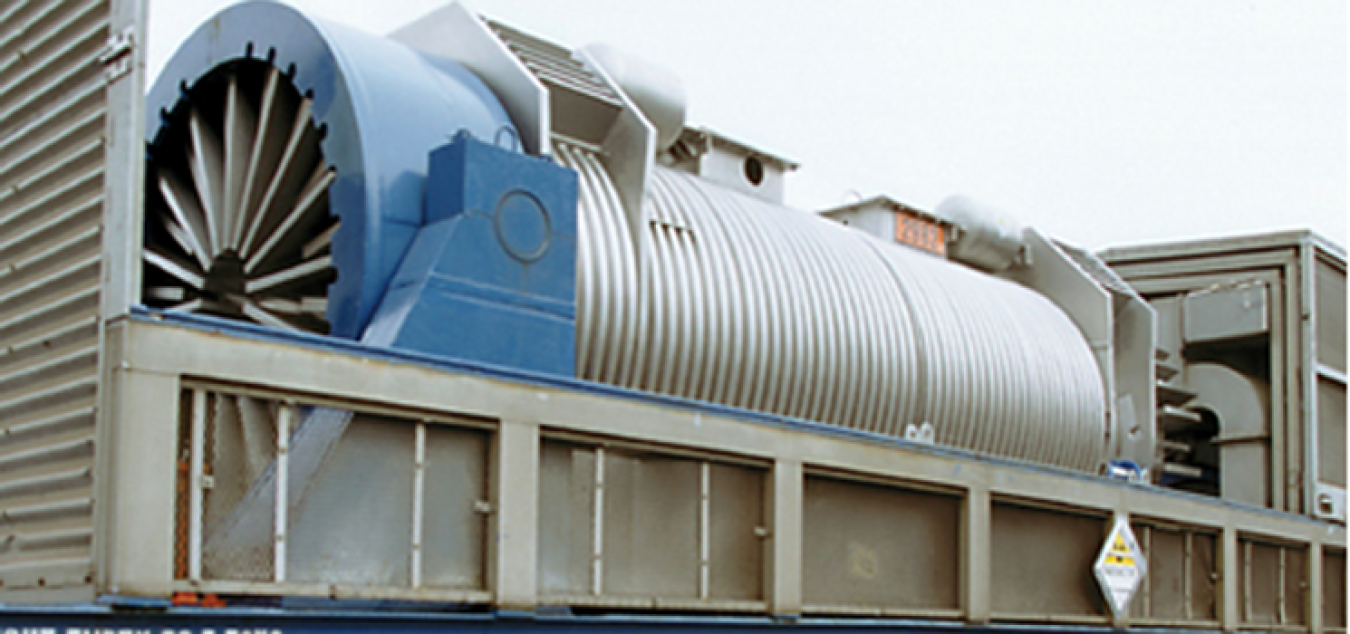
A typical spent nuclear fuel cask sitting on a railcar. Since the early 1960s, the United States has safely conducted more than 3,000 shipments of used nuclear fuel without any harmful release of radioactive material.
In order to assure the development of a sustainable nuclear fuel cycle for the nation’s energy future, to provide a sound technical basis for implementation of a new national policy for managing the back end of the nuclear fuel cycle, and to better understand, assess, and communicate the technical basis, risks, and uncertainty associated with the safe and secure disposition of used nuclear fuel and high-level nuclear waste (HLW), the Office of Used Nuclear Fuel Disposition Research and Development (UNFD R&D) established the Used Fuel Disposition Campaign (UFDC) to conduct R&D activities related to storage, transportation, and disposal of used nuclear fuel (UNF) and HLW.
R&D Activities
UFDC explores the potential R&D needs associated with the permanent geologic disposal of spent nuclear fuel and high-level nuclear waste and the dry storage of used nuclear fuel. In addition, the UFDC conducts R&D related to the entire waste management system to obtain perspectives regarding the implementation of future waste management strategies.
Disposal
The UNFD R&D is investigating various geologic media and concepts for the disposal of SNF and HLW that exists today and that could be generated under future fuel cycles. The disposal of SNF and HLW in a range of geologic media has also been investigated by other countries. Considerable progress has been made in the U.S and other nations, but research and development is needed in some areas. Knowledge gaps will be addressed in a manner that will build confidence in the national effort to address the challenges of nuclear waste disposition. Some of the R&D is accomplished in a collaborative manner involving academic and research institutions, and other countries’ waste management organizations.
The R&D program for disposal is evaluating the viability of mined repositories in three generic geologic media (salt, clay, and crystalline rock). In addition to mined repository disposal, R&D is being conducted on the use of deep boreholes for disposal in crystalline rock. As other disposal concepts are identified that warrant further investigation they will be evaluated. Developing the necessary approach and technical basis for site screening and selection, execution of site characterization, engineered system design, and determination of site suitability are important functions of the R&D program.
The UNFD R&D addresses non-site specific characteristics of engineered and natural systems, and generic system modeling of performance that will permit site screening processes to go forward. There is an R&D focus on aspects of the systems determined to be important to long-term safety of the repository system.
UFDC Mission
To identify alternatives and conduct scientific research and technology development to enable storage, transportation and disposal of used nuclear fuel and wastes generated by existing and future nuclear fuel cycles.
Used Fuel Disposition R&D Documents
Storage and Transportation
UNFD R&D is being used to help develop the technical basis for extended storage and eventual large-scale transport of used nuclear fuel (UNF) and high-level waste. Particular emphasis is being placed on R&D related to the extended storage of used nuclear fuel; fuel retrievability and transportation after extended storage, and storage and transportation of high-burnup used nuclear fuel.
There are a number of different approaches being used to achieve the R&D goals. A high-priority effort is related to implementing a collaborative high burnup, full-scale spent fuel demonstration project with the power industry in the U.S. An additional effort is using laboratory tests, in situ measurements, and modeling to contribute to the technical basis for the extended storage of existing reactor fuels. Work is also progressing on computational models for storage and transportation.

